How to Get Rid of Squash Bugs
This post may contain affiliate links. Read my full disclosure here.
I discovered squash bugs (Anasa tristis) when we started gardening at our current location. I’d never seen them before, so I didn’t pay much attention – until plants started getting sick. They damaged all our cucurbit plants – cucumbers, melons, squash and pumpkins.
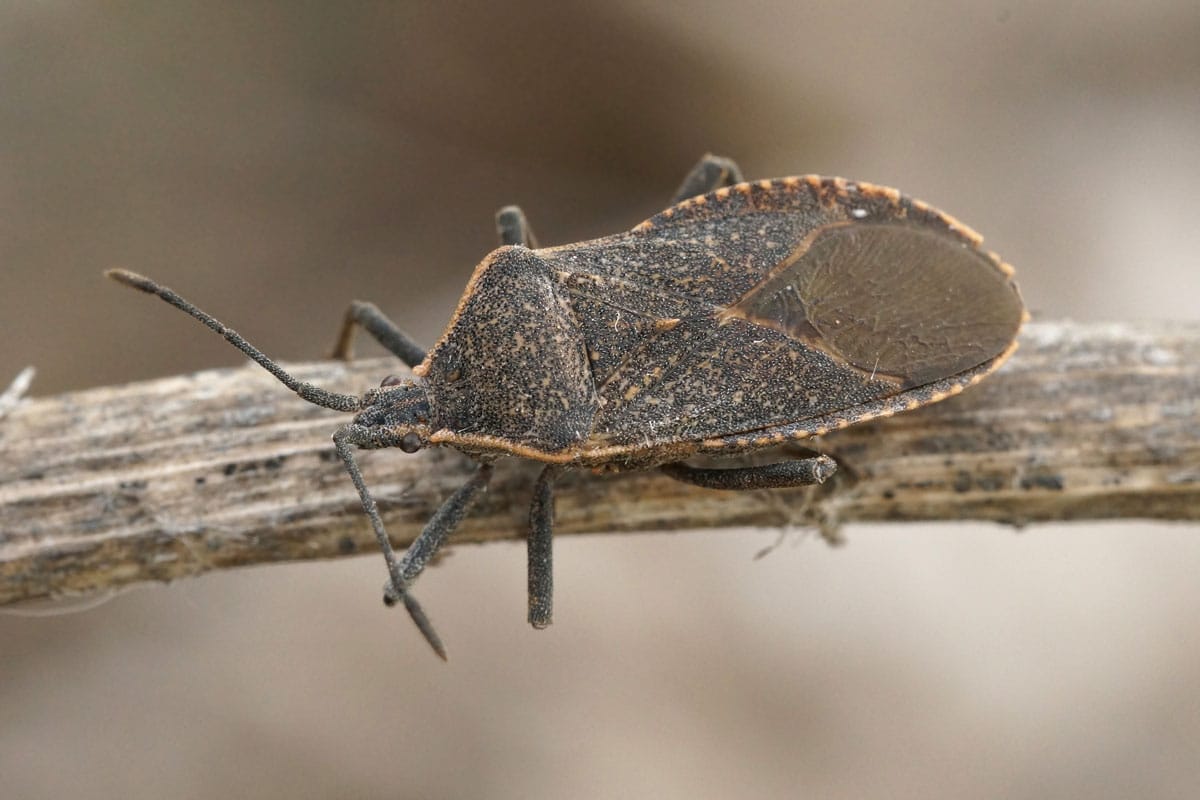
I tried a lot of different control methods over the years. I’m happy to say we have eliminated them as a significant threat to the garden. I’ll share how to identify them, short term control methods, and long term strategies to get rid of squash bugs for good.
Identifying Squash Bugs
There’s typically only one generation per year, though some years may see a second partial generation. (When they’re taking over your garden, it sure seems like a lot more.)
Adults and nymphs inject toxins into host plants and feed on sap. Plants get spotty and start to wilt. Over time, large numbers of the bugs can kill the plant.
Squash bugs show up in three distinct stages – adults, eggs, and nymphs (immature bugs).
Adults
- Size: approximately 1/2 inch in length
- Shape: flattened, elongated, shield-shaped bodies with prominent antennae
- Color: grayish-brown in color with alternating light and dark patches on their wings. Mature squash bugs have distinctive orange or rusty-colored markings on their abdomens. This helps distinguish them from other similar-looking insects.
- Flight: Adults have fully developed wings and fly. Nymphs (immature bugs) cannot fly.
- Feeding and behavior: Adults feed on plant sap and reproduce throughout the growing season. Although they can fly, they usually crawl and hide in the foliage. Females appear early in the season (June) and continue egg laying though mid-summer.
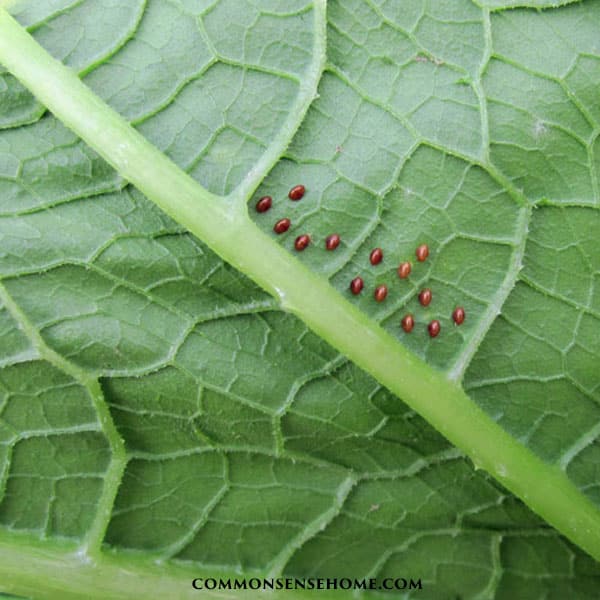
Eggs
- Size: about 1/16 to 1/8 inch in length
- Shape: oval shaped, somewhat flattened. Typically laid in a grid pattern, but sometimes spread over a wider area.
- Color: Initially have a light green to yellow coloration, gradually turning bronze or copper colored as they mature.
- Location: Usually found in clusters stuck on the undersides of leaves or near the base of host plants.
- Amount: Anasa tristis typically lay eggs in groups of 12 to 20
- Eggs hatch in 1 to 2 weeks, depending on environmental conditions such as temperature and humidity.
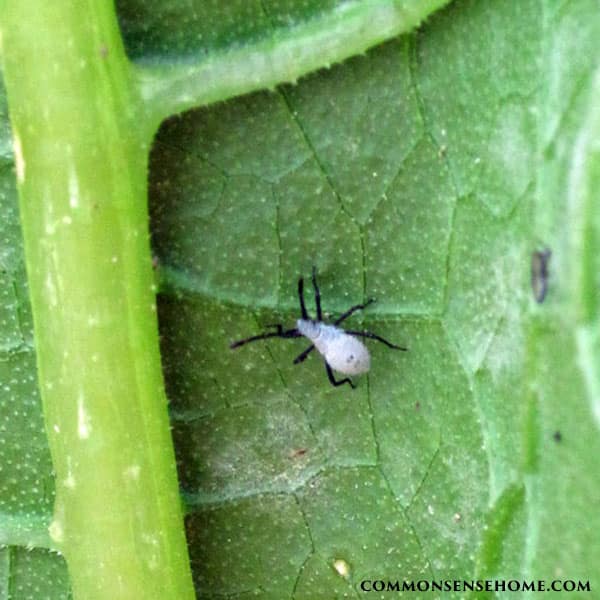
Nymphs
- Size: Increasing from 1/10 to 1/2 inch long as they progress through 5 stages, called instars.
- Shape: small, oblong, wingless, with soft bodies
- Color: Initially pale green in color with reddish-orange legs and antennae. As squash bug nymphs mature, they develop darker coloration.
- Location: Undersides of leaves and on stems of host posts.
- Feeding and behavior: Adults and nymphs feed voraciously on plant sap and can cause significant damage to leaves, stems, and fruit if left unchecked.

Squash Bugs vs Stink Bugs
One of the reasons I didn’t realize I had a problem was that I mistook my squash bugs for stink bugs. Some stink bugs are pests, but some are beneficial insects.
For instance, spine shouldered stink bugs and two spotted stink bugs eat other insects. Brown marmorated stink bugs are pests, and feed on a wide variety of fruits and vegetables.
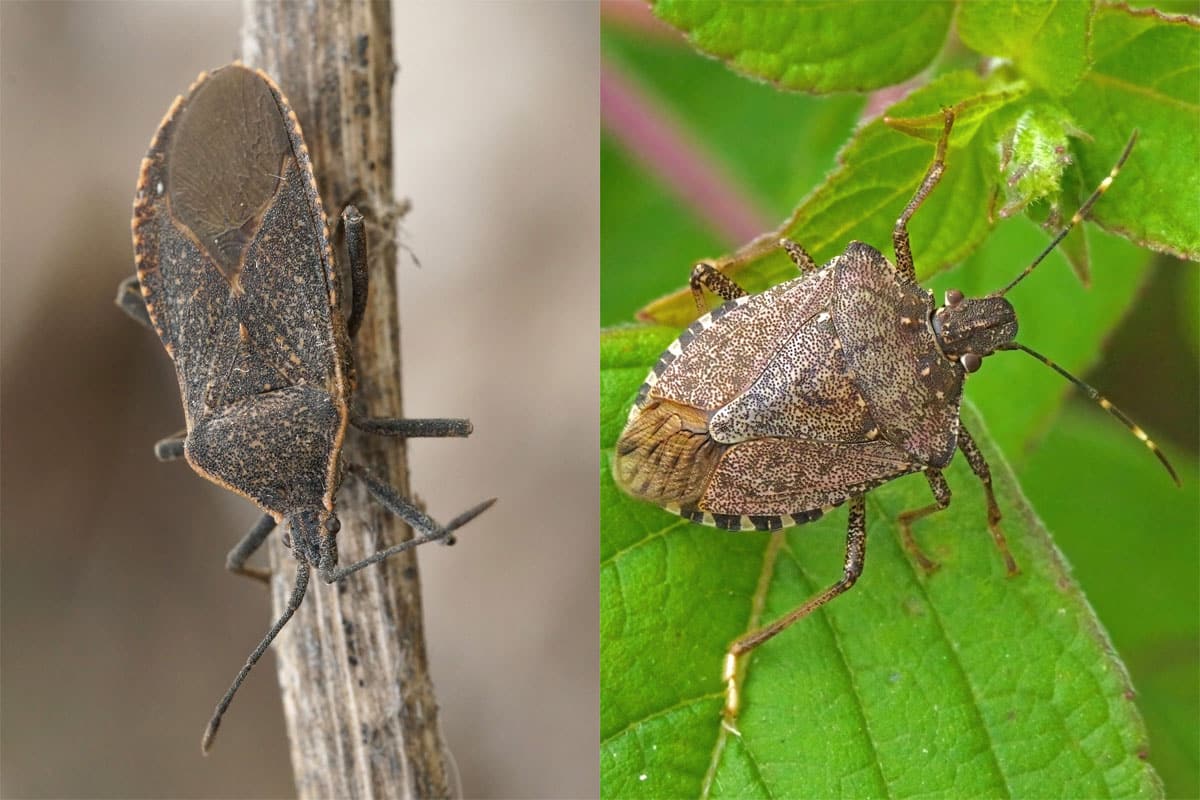
The simplest way to tell the difference between a squash bug and a stink bug is the smell. Stink bugs often give off a bad odor when disturbed, and have a very musty odor when smashed. Squash bugs don’t stink when you bump them, and smell like fruit loops when you smash them.
How to Get Rid of Squash Bugs
One of the simplest and most effective methods of controlling squash bugs is by handpicking them off your plants. Inspect the undersides of leaves and stems early in the morning, when the bugs are less active. Drop the bugs and eggs into a bucket of soapy water to kill them.
Faster alternatives – Use a handheld vacuum to suck up the adults and nymphs. Wrap duct tape around your hand, sticky side out, and press it against the egg masses. The eggs stick to the tape with minimal damage to the plant.
Insecticide applications work better against nymphs than adults. Some natural insecticides that may help include:
Would you like to save this?
- Neem oil
- Spinosad
- Permethrin – may eliminate adults
- Diatomaceous earth (DE)
Be aware that pesticides can kill pollinators, too. It’s best to apply in the early morning or late in the day, when bees are less active. Apply neem oil, spinosad, and permethrin according to package directions.
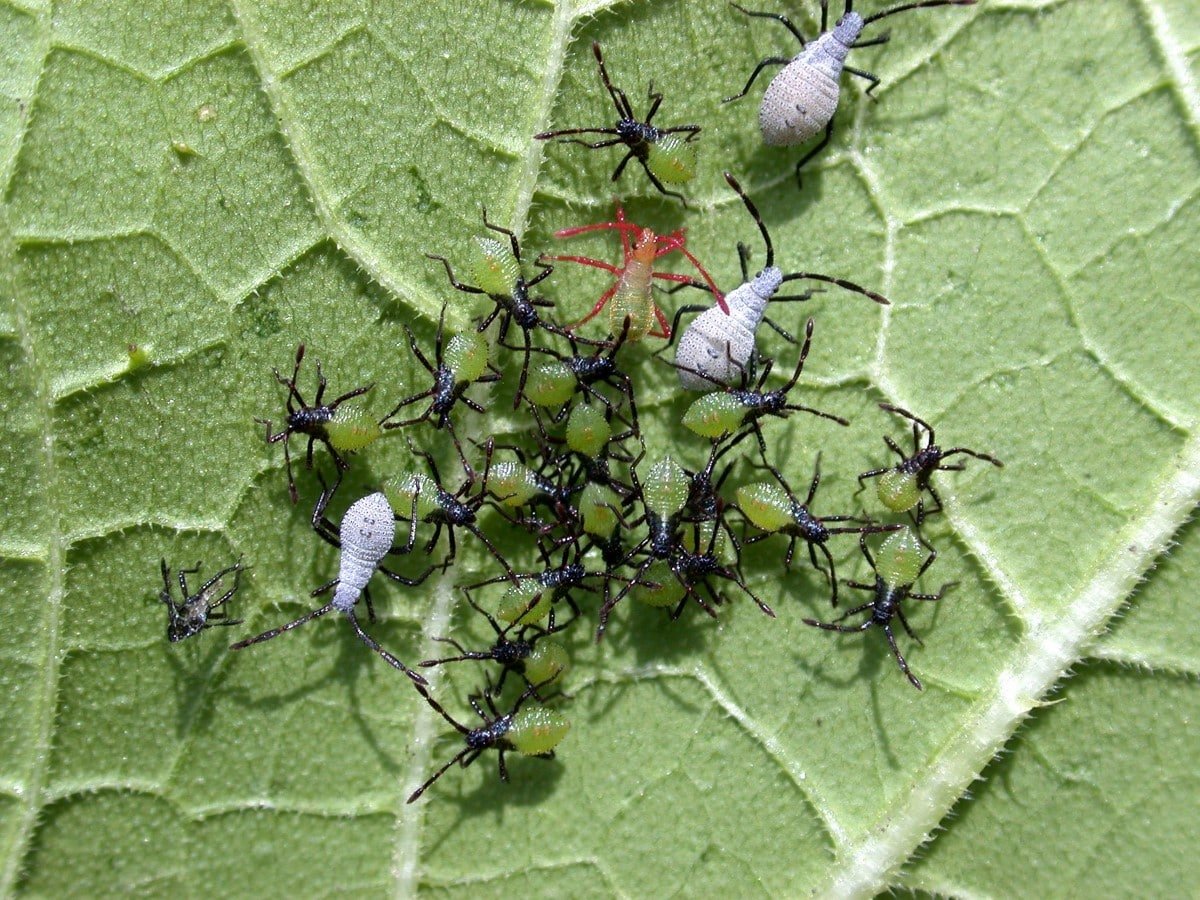
Diatomaceous earth is a natural powder made from fossilized diatoms, which are microscopic aquatic organisms. Sprinkle diatomaceous earth around the base of squash plants and on the soil surface. When squash bugs come into contact with diatomaceous earth, it dehydrates their exoskeletons, ultimately leading to their demise. (DE helps with slugs, too.)
Runner Duck Pest Control
We got rid of our squash bugs permanently by introducing runner ducks for garden pest control. Runner ducks LOVE squash bugs.
We regularly see them disappear into the pumpkin patch while patrolling. Every once in a while a little head will periscope up to look around, and then they disappear again. Last year I didn’t see a single squash bug.
For a detailed explanation of how to use ducks in the garden, see “Duck Pest Control“.
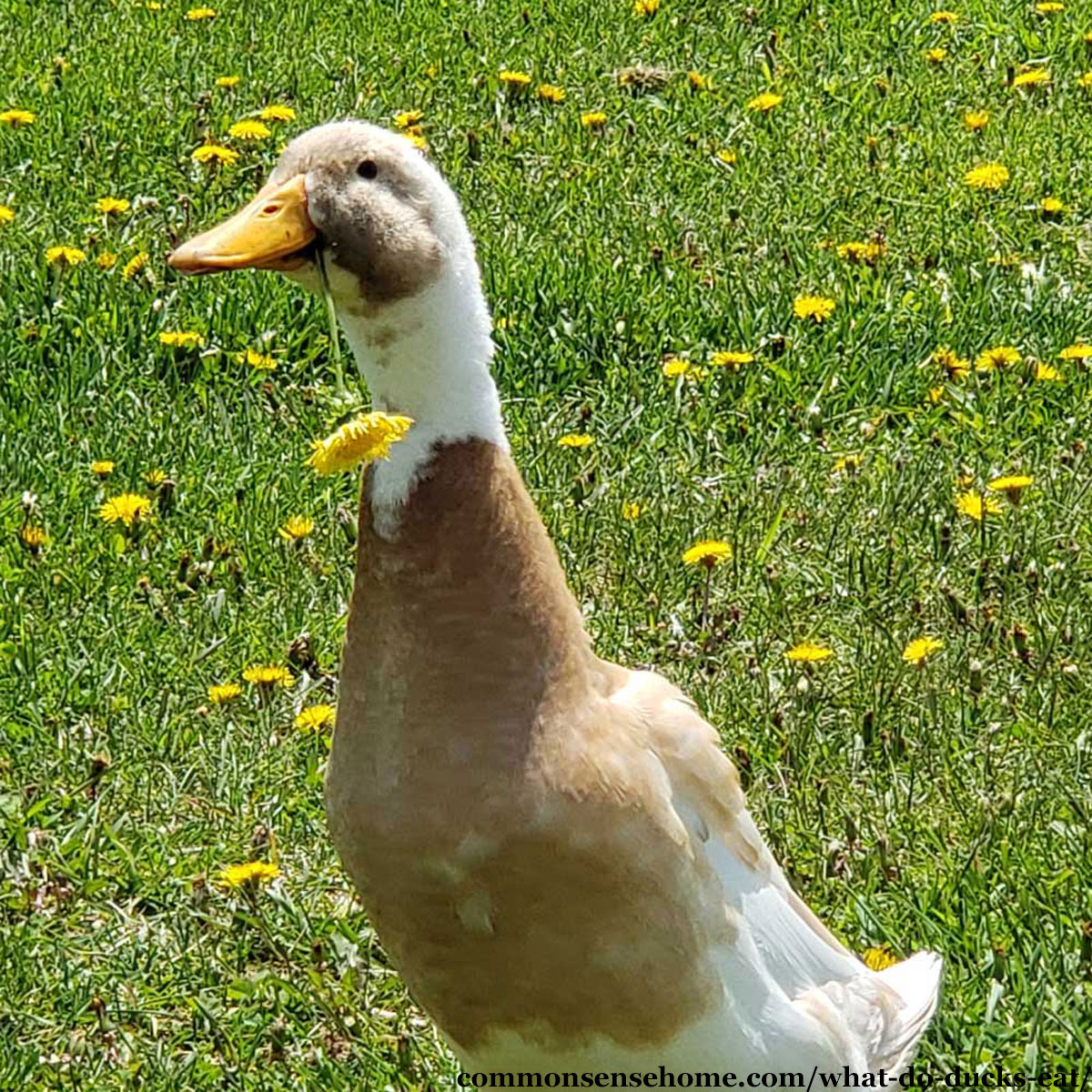
Squash Bug Prevention
Covering your plants with lightweight row covers can prevent squash bugs from reaching them. Be sure to secure the edges of the row covers tightly to prevent pests from sneaking underneath. Remove the covers once blossoms appear to allow pollination.
Adults crawl into sheltered overwintering sites when temperatures get cold; nymphs die. If you remove plant debris and avoid heavy mulch, you eliminate some of the shelter spots. The downside of this is that you also eliminate spots that shelter beneficial insects.
I don’t like to leave soil bare over winter. With the ducks, we mulch, and they clear out pests in the mulch. If you’re dealing with a heavy infestation of squash bugs, a cover crop may be a better choice than mulch.
Avoid planting host plants in the same location each year. Make sure to space plants far enough apart to allow easy access for plant care. If needed, do some strategic pruning to clear tangled vines and remove hiding spots.
Plant nectar-rich flowers like marigolds and dill to attract beneficial insects to your garden. These beneficial insects feed on squash bug eggs and nymphs, preventing them from maturing into adults. See “Attracting Beneficial Insects” for more information.
Companion planting herbs and flowers such as mint, catnip, and nasturtiums can deter squash bugs while attracting beneficial insects.
Don’t forget about insect eating birds. Some of our favorite songbirds are also fierce bug hunters. Bluebirds, wrens, swallows, and other species can be part of your pest fighting team.
Healthy Plants are Resistant to Pests
In the book, “The Anatomy of Life & Energy in Agriculture”, the author notes that insects are drawn to plants that nutrient deficient. The healthier our soil, the healthier our plants. Pest problems naturally disappear.
We’ve seen this in our own garden. Even pests that the ducks won’t eat are less of a problem as the soil improves.
Most cucurbit pests are attracted when Calcium and Phosphorus levels are low. For suggestions on how to boost soil nutrients, see “Organic Fertilizer Tips“.
My strategy for getting rid of squash bugs for good is that a strong offense makes the best defence. Focus on plant and soil health and bug hunting and pesticides will be a thing of the past.
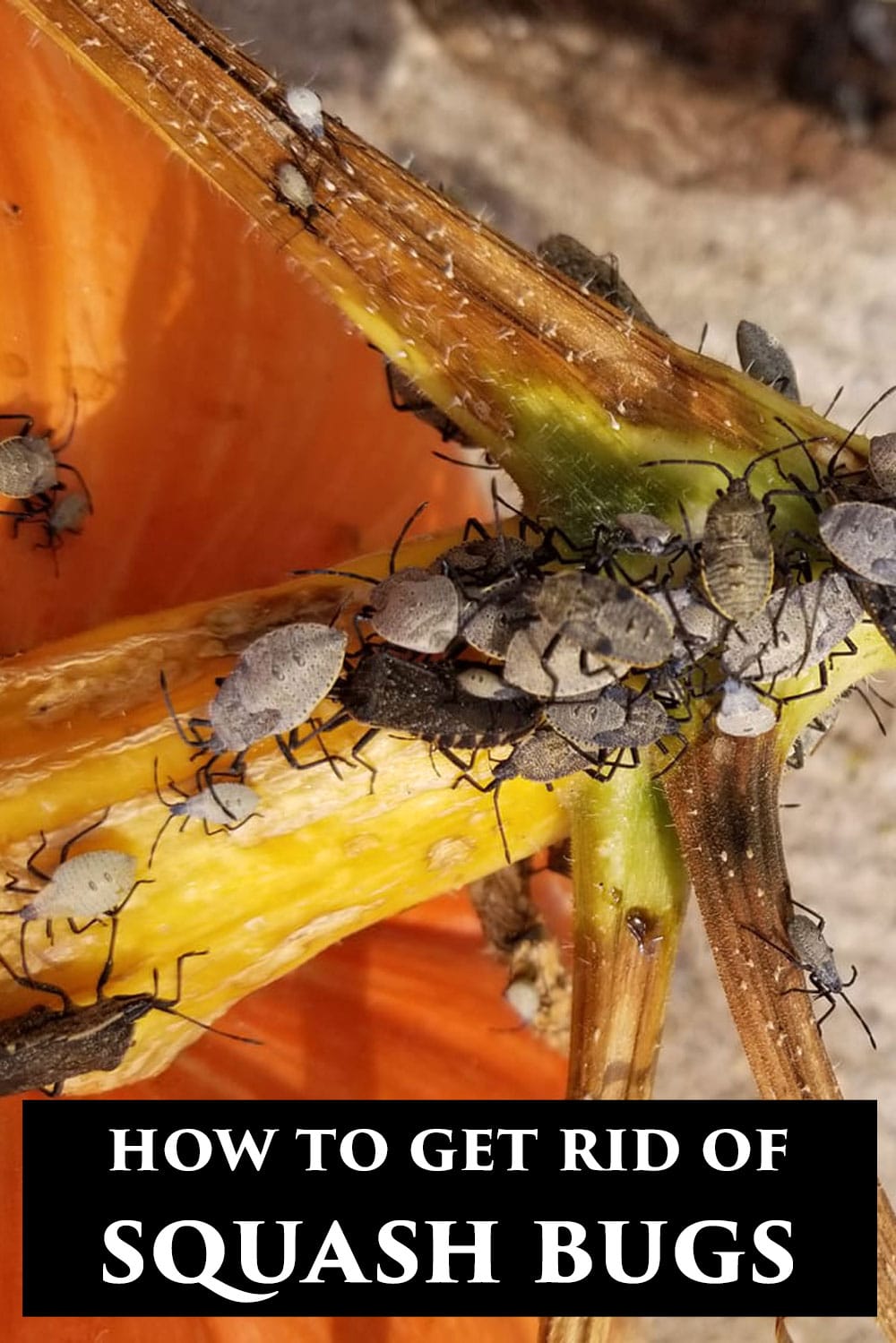

This article is written by Laurie Neverman. Laurie and her family have 35 acres in northeast Wisconsin. They grow dozens of varieties of fruiting trees, shrubs, brambles, and vines, along with an extensive annual garden. Along with her passion for growing nutrient dense food, she also enjoys ancient history, adorable ducks, and lifelong learning.


I was starting to see squash bugs on my light green plants 2 weeks ago and I added a little lime to the soil and now the plants are almost blue green and I don’t see eggs or bugs anymore. I expect them to be back at some point but the difference is so profound, I had to mention it here.
Thanks for sharing. Bioavailable calcium is often in short supply when pests are raising havoc.
We’ve been battling squash bugs for years. The only effective control I’ve found is handpicking every day during infestation and 2-3 times a week when we don’t have an infestation. Unfortunately, we have at least 2-3 complete generations each year here in north Texas, so early planting or delayed planting don’t work to avoid the squash bug.
Have you tried soil testing? I’d be curious to see if you would have improvement with more bioavailable calcium and phosphorous.
House Wrens (Troglodytes aedon) are dedicated insect eaters and they do eat squash bugs because I’ve seen them hunting in my squash patches. I can discover an infestation of dozens of nymphs in a small squash patch in the morning, finger squish (yes, it’s ichy, but fingers are washable and it is more effective than hand picking to put in a can of soapy water) what I can get before they drop (knowing that I missed lots of them), and the next morning they are all gone except maybe one or two. Then, I know that the House Wren patrol had been there. It helps to provide appropriate habitat for the House Wrens, which are native to most of North America. There are good tips here: https://www.allaboutbirds.org/guide/House_Wren
I used to squash them sometimes, too, and put the soapy water container under the spot where I was picking at them, so that the bugs that tried to get away were more likely to fall into the container.
House wrens are adorable and have a lovely call, too. We have a nest box for them near our red raspberry patch. Thank you for bringing up insect eating birds. We have so many different birds types here that I sometimes forget that they are not so common for others.
Ah! We had a crop of squash bugs last year. I moved the mint and planted more squash…so this helps knowing your research. I think I want runner ducks too! Yours are adorable! Thank you!
We used to get them so bad when we first started gardening here. The soil was poor, because the yard was torn up while building the house, so we had subsoil mixed in the garden beds. Over the years as the soil improved, so did the squash bug problem. The ducks came and finished them off. The flock is a little on the large side now for the coop, especially when they are stuck inside, but thankfully it’s been a mild winter. No more new duckies for a while! (But I love each and every one of them. They are such characters.)
I love your ducks too! What does ‘runner’ duck mean? That they roam around the property?
I grew up with cows, sheep, pigs and chickens, but no ducks. I think we missed out! 🌝
Hi Nancy.
Runner ducks, also known as Indian Runner Ducks, are a specific duck breed with a more upright posture and typically lighter build. Sometimes people refer to them as “bowling pin ducks”, because they do somewhat resemble bowling pins when upright.
I’ve noticed that the breed standard runner form is quite slender, but we’re now in our second generation of ducks hatched here in northeast Wisconsin, and our ducks are trending larger. I suspect maybe it is in part due to adapting to the cold? Often you’ll see huge flocks of them being raised in Asia and they are skinny as can be.
Runners tend to be good layers. They are generally not raised for meat in the U.S., because people opt for heavier breeds like Pekins. They are raised for meat in Asia. Our flock is for pest control and eggs.
Even though our ducks are larger than average runners, they still live up to their name, running here and there around the gardens, orchards, and yard.
Heavier duck breeds, like Pekins and Rouens, have a more horizontal profile. (We call them low rider duckies.) Since they are a larger animal, they tend to do more damage to plants by nibbling and stomping, and twiddle bigger holes in the ground.